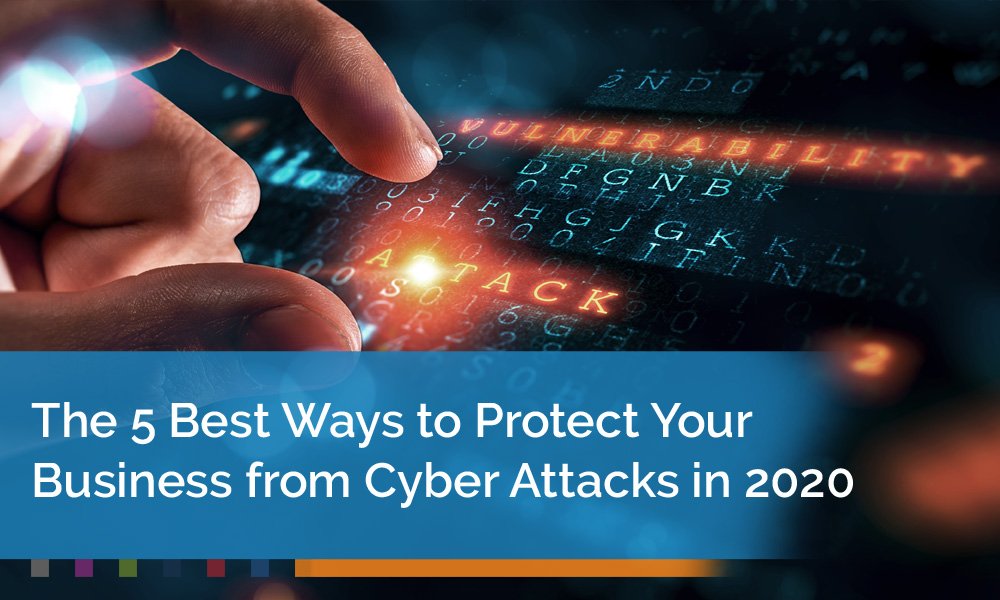In 2020, protecting a business from cyber attacks will remain as important as ever. Cybersecurity threats abound as hackers find ever more ingenious ways to get their hands on a company’s most valuable asset: its data.
According to Verizon, some 43 percent of cyber attacks target small businesses, and well over 80 percent of those were successful. Cybersecurity isn’t just a concern of major companies anymore. Everyone needs to develop adequate security and fast. Here are five effective ways to defend against cyber attacks in 2020.
5 Ways to Defend Against Cyber Attacks in 2020
The slew of security breaches shows no signs of abating – if anything, they’re getting even more frequent. As computer hackers continue to target businesses, security remains a prominent concern for companies of every size. Fortunately, there are many steps that all offices can take to secure their data and network. Use these five strategies to prevent cyber attacks in 2020.
1. Practice Best Policies and Educate Staff
Practicing the best policies is essential for evolving a security-based culture. Good habits will help thwart many cybercriminals that hedge their bets on employees working fast and not paying attention. Some best practices for cybersecurity include:
● Zero-Trust models: Zero-Trust security policies require users to authenticate themselves every single time they access the network or a device. Entering a password each time a computer goes to the screen saver is one example of Zero-Trust.
● Whitelist models: In whitelisting, only the services, programs, or devices that have been explicitly given permission can run or connect to the network. This lies in contrast to blacklisting, which allows anything to run as long as it hasn’t been banned.
● Email communication policies: Over 90 percent of cyber attacks begin with phishing – the sending of a fake email to trick users into handing over credentials – and most evade security. Provide employees explicit policies on when, where, why, or how they might receive communications from services and companies. Provide links to logins and make sure employees never click on email links.
2. Use Modern Software, Hardware, and Services
Technology represents a sizeable investment for any company, especially when it comes to specialized hardware or software. Companies may be inclined to hang onto these investments for as long as possible, adopting the attitude that if something isn’t broken, it doesn’t need to be fixed.
However, old software and hardware introduce avoidable risks into an office. Security patches and updates exist because cybercriminals are tenacious, continually looking for ways around obstacles. If a piece of software or hardware has been discontinued, then those patches might not exist, creating an opportunity for entry.
3. Protect Information, Even If It Isn’t Business Data
Most businesses understand that it’s critical to protect confidential information like customer credit card information, trade secrets, and employee information. However, what they may not realize is that any information about a company is valuable – and hackers know. In addition to protecting sensitive information, also train employees to control things like:
● Professional contact information: Discourage or prohibit employees from posting their work email or phone numbers publicly where hackers can find it. The best phishing attacks are those that are custom made for their targets.
● Supplier or vendor identities: Some hackers will target a company indirectly by going after a vendor. This is known as a supply chain attack.
4. Do a Sweep for Unsecured Endpoints in the Office
Cybersecurity strategies that focus solely on securing computers and the internet network are ineffective. The average 21st-century office relies on technology to function – the average employee uses 2.3 of them each day to complete their job. Many of these devices are internet-connected, and often they contain hard drives, CPUs, or other similar hardware as a computer. That makes them hackable, and criminals know. Assess the office and look for unsecured:
● Printers, scanners, or fax machines
● Internet-connected smart devices
● Employee-purchased work devices
● Personal devices that get used for work
5. Invest in Robust Backups
When is the last time the company’s critical records were backed up? If there’s no obvious answer to that question, it’s well past time to change that. Regular backups are a part of both cybersecurity and disaster planning. If something happens to the original records, a company is not left scrambling to reassemble what information they have left to resume normal operations.
Backups also help neutralize ransomware attacks. In these attacks, hackers steal files and demand exorbitant amounts of money in return. Plus, even if a company pays, there’s no guarantee that their data will get returned.
James Imaging Helps Companies Develop Next-Generation Security
Cybersecurity is a more dynamic topic than ever before. As companies increasingly rely on technology to operate, it’s providing more opportunities for cybercriminals to access a business’s most valuable assets. Staying safe from cyber-attacks in 2020 requires a mixture of foresight and awareness of the new digital reality in which most companies operate. It’s a fierce battle, but one that can be won.
James Imaging helps companies fortify their cybersecurity plans. Contact us today to discuss your challenges.


